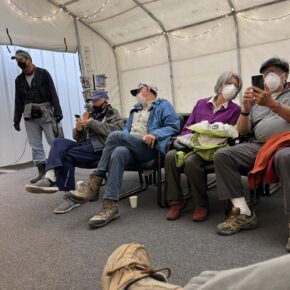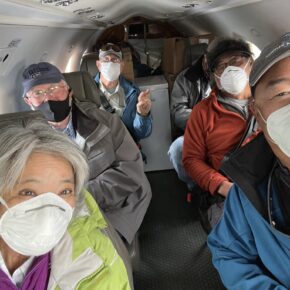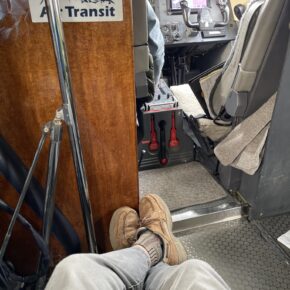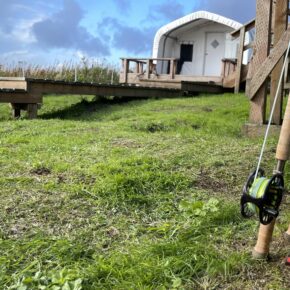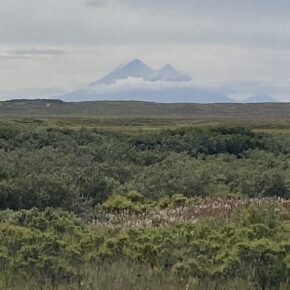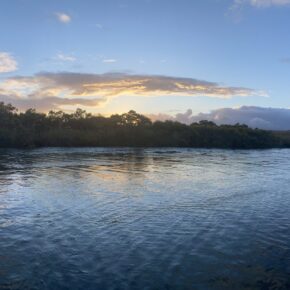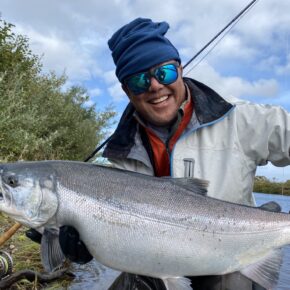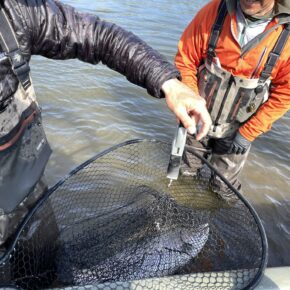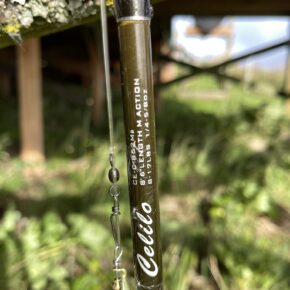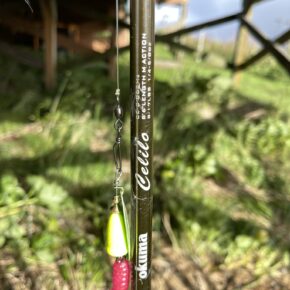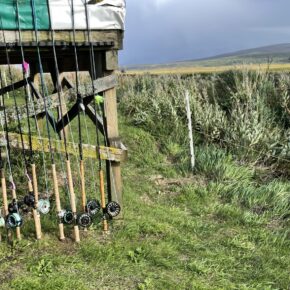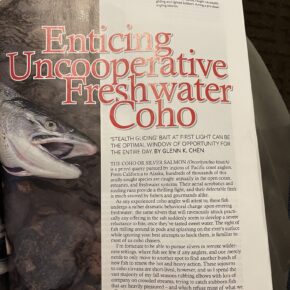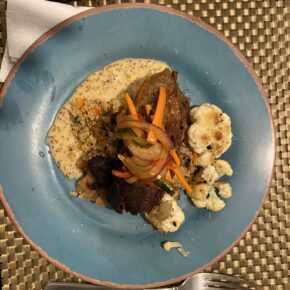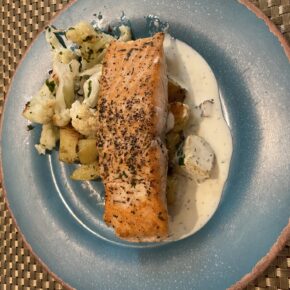Sep 7 – 15 2021. The Silver Lining to this whole crappy year was putting hundreds of Silver Salmon on the line this week. It’s been a long two years that I have been longing to return to the Sapsuk River in the Aleutian Islands for Coho Salmon. The Sapsuk Camp is my favorite trip of the year, fishing with my old friends Mark Won, Jerry and Diana Wang, Kirk and Charlie, the comfortable lodging, great food and friendly skilled guides make this trip unique. It’s not often I get the opportunity to catch hundreds of Coho in desolate solitude with no cell service , internet and without competing crowds of fishermen. The Sapsuk is a Spey Fisherman’s dream. According to Charlie Bunch, 80 year old accomplished spey fisherman and Anchorage resident, it’s hard to beat the quality of the Sapsuk for Silver Salmon. Glen Chen, my old Millpond friend and now working for Alaska Fish and Game loves the Sapsuk and has written articles in Swing Magazine and Salmon and Steelhead Journal about one of his favorite rivers. Last month I received word from Glen that there was a spike in Covid infections in Alaska. For the safety of the approximately fifty Aleut that live there, we were required to be vaccinated before flying to Alaska and on to Nelsons Lagoon. Nelsons lagoon on the Bering Sea is one of the richest and productive salmon fisheries in the world. An active volcano , Mount Pavlof, towers on the horizon puffing steam to this day. I left San Jose in 90 degree weather to spend a cool, rainy and stormy week in Alaska that left an early powdering of snow on the mountains. What a contrast. Nelsons landing is a popular site for Beachcombers looking specifically for Japanese Glass Fishing net floats that have been circling the ocean currents from Japan to Alaska for over 100 years and the weeks powerful storm washed a new load onto the local beaches.
Spey fishing is the main draw for most fishermen here but three seasons ago, my cousin Wayne Syn pioneered a way to fish for Sapsuk Cohos using a single handed rod swimming a subsurface fly with a “Smiley Blade”, This technique is a very exciting and visual way to fish for Coho. Next to fishing floating gurglers and Wogs, nothing is more exciting for me than seeing a 15 lb coho waking behind your fly for a long distance before eating it. Sapsuk Silvers are fierce strong fish.-high caliber silver bullets. The Sapsuk River is a short river with some of the freshest silvers you can catch off the ocean. Because of that, the silvers in the Sapsuk are still ocean hungry and mean. Many of the fish we caught had sea lice with tails indicating they were less than 24 hours from the ocean. This years commercial numbers in Nelson’s Lagoon were surprisingly low. Many of the commercial operations wrapped up operations before the commercial season ended. Despite the disappointing commercial counts, between our six anglers in the group averaged over 150 fish a day. When we found the schools of fish in the river, we could stay on them most of the day catching fish regularly. We didn’t see as many larger schools like we saw two years ago but the fish were there and sometimes within casting distance of the camp dock making fishing an extra 4 hours a day possible. The sun doesn’t set till 10:00pm during September and if you had the stamina, you could fish a 16 hour day if you wanted to and I did a couple days. The first evening we arrived I caught 20 fish from 4-10 even eating dinner for an hour back at camp. Wearing waders to dinner is allowed.
Our Team leader, Mark Won, has over 100 days at the Sapsuk Camp fishing for Kings and Cohos. The coho season is typically 4 weeks in September through October and we normally shoot for week 2 or 3. The weather for the week made the trip very challenging. I left a heat wave with rolling blackouts in California only to find cool conditions in Alaska wearing 3 to 4 layers of clothing everyday. We had some good days with sun, light wind and clear water. But we also had some of the worst river fishing weather this side of the Amazon I have ever fished in —horizontal torrential rain with sustained 35 MPH winds with 50 mph gusts. With the wind blowing against the current, It looked like you could body surf the waves in the river. Had I not watched Mark Won fishing, casting and catching in those conditions, I would never have thought it possible. Even in the worst conditions with muddy water and storming, I personally managed to catch over a dozen fish in conditions where you couldn’t even look into the wind or wade deep. The river rose and dropped two feet during the week and we had muddy water two of those days which cleared up in 12 hours of good night weather.
I am so thankful that I had another opportunity to fish with my old friends Jerry and Diana Wang. I can honestly say that fishing with Jerry is always more fun than normal. I always fish harder and have more fun when I am fishing next to him –he is electric on the river. Diana and Jerry are also veterans of the Sapsuk having fished there many seasons. Diana is a very proficient Spey Caster and even the guides are impressed with her skills. Last year she caught Covid early in the Pandemic and almost died. This trip was her homecoming and the fish seemed to sense that. Pacing herself all week and conserving her time on the water, when she was fishing, she was incredible and outfished us all in the toughest of conditions.

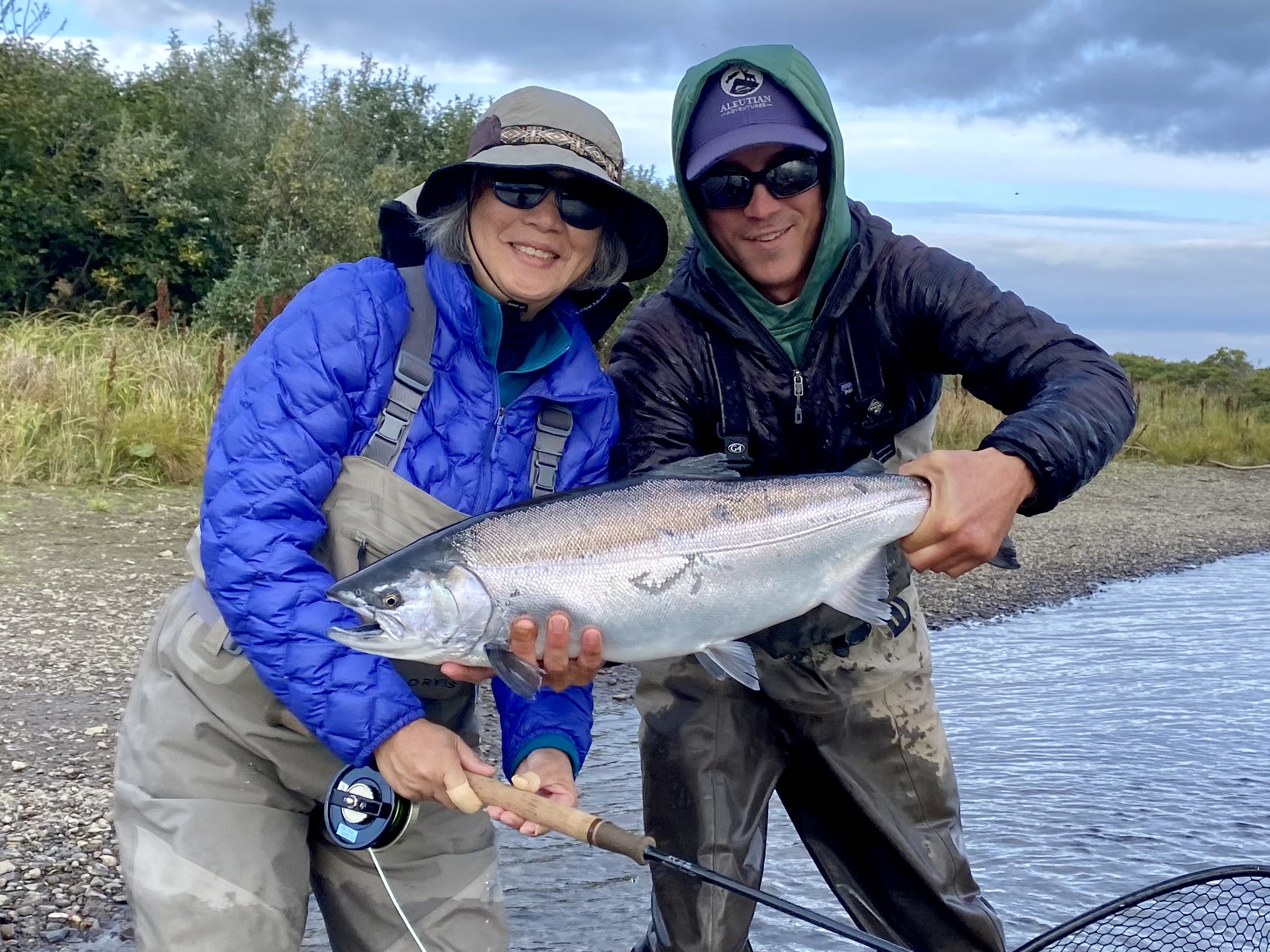
Then there were the bears. We saw Bears everyday and luckily none were very aggressive or curious. Mike and Ian, our guides, always had the shotgun handy and were amazingly skillful at guessing where the bears might pop out and how they move in the heavy brush. The Sapsuk has some the fattest biggest bears I’ve ever seen eating the abundance of fish. My first impression of a big bear encounter was that these bears are Grizzly Bears with the distinctive hump but I was educated by Kirk who informed me that they were Kodiak Brown Bears. All grizzly bears are brown bears, but not all brown bears are grizzly bears. The difference between a grizzly bear and a brown bear is fairly arbitrary especially when they pop out of the brush right behind you. In North America, brown bears are generally considered to be those of the species that have access to coastal food resources like salmon. Grizzly bears live further inland and typically do not have access to marine-derived food resources. They are both magnificent and can make you pee your wader.
I am relatively new to Spey fishing, my colleagues are all great Spey Casters and the Guides are accomplished instructors. The best way to improve is to put as many hours on the river casting as possible. The Sapsuk is the ultimate continuing education Spey Casting classroom. One morning I asked Mike to analyze my casting and we kept being interrupted by hookups on Cohos even with my worst casting. By the end of the trip, My casting had improved significantly. One thing I found useful was to cast the camp spey rods. They are perfectly matched to the right length and weight lines. I realized immediately while casting the camp rods that my lines and rods weren’t matched properly. I have a lot to learn with respect to the right length lines, the right tips, the right length leader matched to the right weight fly. It’s much easier to improve if you start out with a perfectly matched rod and then learn to cast a not perfectly matched rod. I didn’t know what a great setup was till I fished with one for an hour. What a difference it makes when you have a well balanced rig in your hand, The Sapsuk trip is on my annual list because it is here where I learn the most about Spey. Practicing on a platform in my boat on the lake or at the casting ponds is not like wading to your knees in a river. Not even close. The only way to improve is to put time on the water in different river conditions.
Coho flies that seemed to work best were all Pink, Chartreuse black, flies with Size 1 (vs 1/0) bronze stinger Gammakatsu with lots of flash and tied sparse. With the drastically changing water heights as we had this week, it’s also a good idea to have a variety of weighted flies in the same pattern. Tube flies are more convenient when it comes to releasing fish and an easy way to control the sink rate of a tube fly is to slide on different size tungsten and brass heads over the tube – same fly with different weight cones. Being able to pull the fly away from the hook when landing fish gives you a better shot at grasping the hook for the quick release when the net isn’t handy.
Another technique that worked very well this trip was fishing a T11 head or a Wulff Triangle Taper floating shooting head on a single handed rod. In the muddy water and in the very early mornings, I did much better fishing a short line from the middle river to the shoreline, swinging subsurface flies and gurglers. Next year I think a lighter 6 Wgt 10-11ft switch rod for the mornings and muddy water instead of 9 ft single handed rod might be even better. I think having a foot longer rod will give me more control holding the line higher off the water with one hand for longer subsurface swings without being too short for long spey casts to the far bank. . When things got slower. I found fish closer to shore and in the slower deeper water on the bottom.
Another great perk of fishing the Sapsuk is the ability to process Fresh Salmon Roe to bring home. Bringing home a box of salmon from Alaska always makes my wife miss me less. This year we learned that the Hampton Midtown in Anchorage has a walk in freezer to keep our fish in overnight before flying out. This was the first year we stayed at the Hampton which was even more reasonably priced and close to our favorite Buffet that was unfortunately closed from Covid. Jerry and I ended up ordering Hotel Food at 10pm on our first night and were amazed at how good their burgers and chicken wings were.
Each of us brought a 30 lb box of fish home. The quality of the salmon is excellent. We only bonked the freshest fish and released anything that wasn’t bright chrome less than 24 hours from the ocean. You can tell the fresh ones by the length of the tails on the sea lice that hitch a ride from the ocean and die off in the freshwater. Because the fish are only hours out of the ocean , the Salmon roe is high quality and abundant. I spent several hours for two days processing the dozens of Roe Skeins we harvested. Needless to say, Gina was thrilled with the ten lbs of Salmon Roe I bought back with salmon. I processed them in straight salt brine at camp after de-skeining them, sealed them in ziplocks and then in insulated pouches. I am going to try freezing a couple in vacuum containers to see how long they will last frozen. Our wonderful Camp Chef made sushi one night that was mainly salmon and Ikura that was a hit. Heather, or camp chef two year ago as well, made wonderful hot lunches and great dinners with wonderful desserts all week. She is also a big reason to go back year after year. Even under the harshest weather conditions, Heather made it feel like home with great breakfasts, Streamside lunches with different hot soups, sandwiches and snacks every day. We looked forward to gourmet dinners with wonderful deserts and there was always a large selections of cold drinks and hot coffee all day long. We had our share of bad weather. Thanks also to Heather for the title of this post – “Silver Linings” . The weather was all over the map this week as well (as it was two years ago). A couple nights the tents shook like they might fly away in the 50 mph wind and rain but Mike and Ian assured us they had seen worse and the tents were rated for over 100 mph winds. We were warm and dry every night.
It was fun rooming up with my old bunkmate Captain Kirk. Kirk and I hit it off two years ago, and had it not been for Covid we would have gone striper fishing in San Luis together last year. Kirk had a close call with a heart issue earlier this year but he did great on the trip taking it easy. He holds the camp record for largest Coho on a fly (over 17 lbs). Kirk discovered the joys of fishing a #3 Pink Vibrex on a baitcasting rod last trip. It was fun to watch a die hard Spey Fisherman like Kirk catch a bunch of salmon on conventional gear. I think he was afraid he might go blind or grow hair on his hands if he ever set his fly rod down and picked up a baitcaster with a Vibrex. He now owns his own “dark side” setup and brought it out every day for a little while. . There is nothing that fishes better than a #3 Pink Vibrex with a pink plastic curly tail and it seems like all my flies are migrating towards that look. One Day for kicks, head guide Mike and I had a contest to see who could land the most fish in 10 minutes on a Pink Vibrex. We hooked 4 fish a piece in 600 seconds. Mike landed 2 and I only 1. Mike shook off a big one after landing #1 that made the difference since it would have taken too long to land. The Vibrex is too hard to beat with flies but Jerry has the “bladed fly” down this year. I even saw one on Mark’s fly one day. Things are evolving with each trip and next year I can think of lots of improvements to gear and fly to try.
I fished with a new friend Charlie Bunch for the first time this year. Charlie is an Anchorage native in his 80’s that has Spey Fished all over Alaska. He is a very wise fisherman. At one time he was Glen Chen’s boss and they became close fishing friends. He, like Glen, has fished the Sapsuk for many years. Charlie has Spey fished many rivers in Alaska over the years and is also a master spey rod builder and also ties beautiful salmon and steelhead flies. He kept me rolling with new “dad” jokes every night. I knew there was something special about the Sapsuk watching Charlie fish it. His casting is like poetry and he has intimate knowledge of the river at all water levels. You can tell by watching him that he considers the Sapsuk a very special place. Watching a veteran of the river fish is the best way to improve your skills. I learned alot filming Mike and Ian fishing for an hour about where to cast and swing and how to work the fly. Sometimes it just great to watch skilled fishermen fish. I have so much video to edit.
This post is a work in progress and will be edited as I go though the media over the next months. The videos will be posted eventually that really tell the story… Im already booked for next year with the same group and still basking in the silver afterglow of fishing the Sapsuk.





